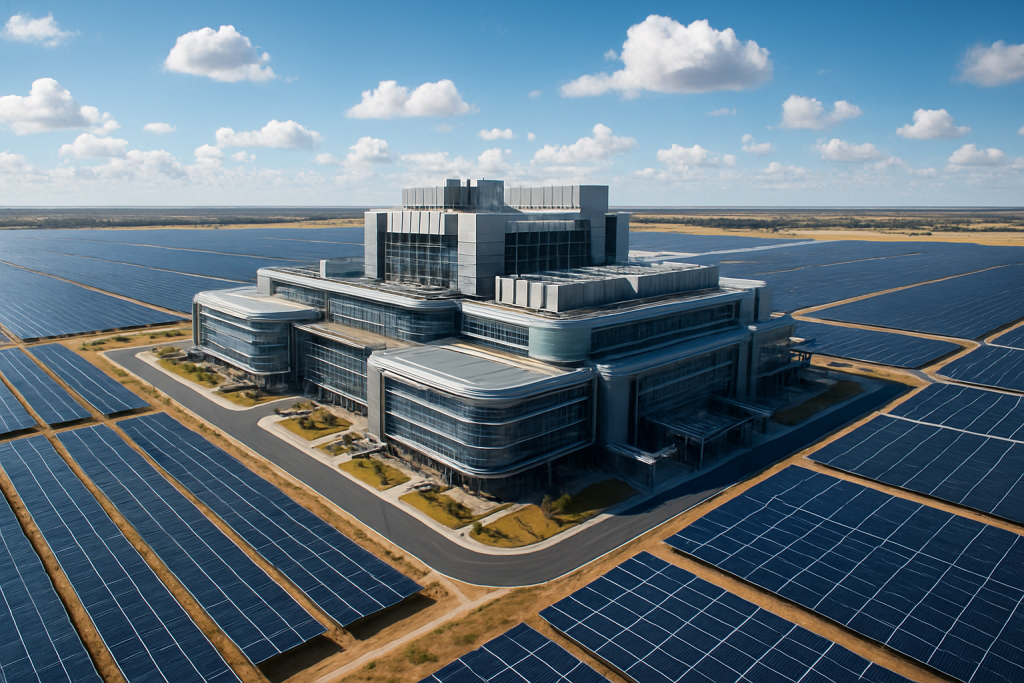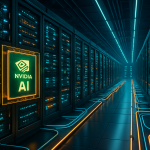The Land Down Under is about to get a serious tech boost, courtesy of Amazon. In a move that’s sending ripples across the digital landscape, the e-commerce giant has announced a massive 20 billion Australian dollar (that’s roughly $12.97 billion USD for those playing along at home) investment to supercharge its data center infrastructure in Australia over the next five years. Think of it as Amazon building a digital fortress, not to defend against Orcs, but to house the future of AI. This isn’t just pocket change; it’s Amazon’s largest technology commitment in Australia to date, signaling a major bet on the country’s potential as a tech hub.
But why Australia? And why now? To understand this move, we need to rewind a bit and look at the bigger picture. Amazon Web Services (AWS), the cloud computing arm of Amazon, has been quietly, but steadily, dominating the cloud infrastructure market for years. They’re the engine behind countless startups, established businesses, and even government agencies. Think of them as the digital water and power company for the internet age. But the game is changing, and the name of the game is AI.
The explosion of artificial intelligence and machine learning applications has created an insatiable hunger for computing power. Generative AI, the kind that powers everything from creating photorealistic images from text prompts to writing passable Shakespearean sonnets, requires massive amounts of data processing and storage. Existing data centers are being pushed to their limits, and companies are scrambling to build more, bigger, and faster facilities. Australia, with its growing tech sector and strategic location in the Asia-Pacific region, is emerging as a prime location for this digital gold rush. It’s like finding a new vein of vibranium, only instead of Captain America’s shield, it’s fueling the next generation of AI.
So, what exactly will this $13 billion buy? The lion’s share will go towards expanding server capacity, specifically designed to handle the intense demands of generative AI workloads. This means faster processing speeds, more storage, and the ability to train increasingly complex AI models. In essence, Amazon is building the infrastructure that will allow Australia to become a leader in the AI revolution. But the investment doesn’t stop there. Amazon is also putting its money where its mouth is when it comes to sustainability.
The company plans to invest in three new solar farms in Victoria and Queensland, with a combined capacity of over 170 megawatts. This is more than just greenwashing; it’s a recognition that powering these massive data centers requires a significant amount of energy, and renewable sources are the only sustainable way forward. It’s like building a super-powered engine that runs on sunshine. This commitment to renewable energy isn’t just good for the planet; it’s also good for business, as consumers and businesses alike increasingly demand sustainable practices.
The announcement has been met with widespread enthusiasm, particularly from the Australian government. Prime Minister Anthony Albanese took to X (formerly known as Twitter, for those who still remember the good old days) to praise the investment, calling it a “huge vote of confidence in the Australian economy.” It’s easy to see why. This investment is expected to create thousands of jobs, stimulate local economies, and position Australia as a key player in the global AI and cloud computing landscape. It’s like winning the lottery, but instead of a lump sum, you get a steady stream of economic benefits for years to come.
But Amazon isn’t alone in this data center arms race. Microsoft and Google are also pouring billions into expanding their cloud infrastructure around the world. This is part of a broader trend, driven by the insatiable demand for AI and cloud computing services. Amazon has recently announced similar investments in Pennsylvania, North Carolina, and Taiwan, signaling a global push to build the infrastructure of the future. It’s like a modern-day space race, but instead of rockets and astronauts, it’s data centers and algorithms.
What are the long-term implications of this investment? For Australia, it could mean a significant boost to its tech sector, attracting talent and investment from around the world. It could also lead to the development of new AI-powered applications and services, benefiting businesses and consumers alike. Imagine AI-powered healthcare, personalized education, and smarter cities, all powered by the infrastructure that Amazon is building. But there are also potential challenges. The increased demand for energy could put a strain on the grid, and the concentration of data in a few large data centers raises concerns about privacy and security.
From a global perspective, this investment highlights the growing importance of cloud infrastructure and AI in the modern economy. It also raises questions about the concentration of power in the hands of a few large tech companies. As AI becomes more pervasive, it’s crucial to ensure that it’s developed and used responsibly, and that the benefits are shared broadly. It’s a bit like the invention of the printing press. It democratized information, but it also created the potential for misinformation and propaganda. We need to learn from history and ensure that AI is used for good.
And what about the ethical considerations? As AI becomes more sophisticated, it raises questions about bias, fairness, and accountability. Who is responsible when an AI makes a mistake? How do we ensure that AI systems are fair and unbiased? These are complex questions with no easy answers, but they need to be addressed if we want to build a future where AI benefits everyone. It’s a bit like the debate over genetically modified organisms. There are potential benefits, but also potential risks, and we need to proceed with caution.
Finally, let’s talk about the financial impact. This investment is a clear signal that Amazon sees Australia as a key market for growth. It’s also likely to have a ripple effect on the Australian economy, creating new opportunities for businesses and entrepreneurs. But it also raises questions about competition and the potential for monopolies. As a few large tech companies dominate the cloud infrastructure market, it’s important to ensure that there’s still room for innovation and competition. It’s a bit like the Wild West. There’s plenty of opportunity, but also potential for abuse, and we need to make sure that the rules of the game are fair.
In conclusion, Amazon’s $13 billion investment in Australian data centers is a significant event with far-reaching implications. It’s a testament to the growing importance of AI and cloud computing, and it highlights the potential of Australia as a tech hub. But it also raises important questions about sustainability, ethics, and the concentration of power. As we move into the age of AI, it’s crucial to address these challenges and ensure that the benefits of this technology are shared broadly. It’s a brave new world, and we need to navigate it carefully.
Discover more from Just Buzz
Subscribe to get the latest posts sent to your email.


